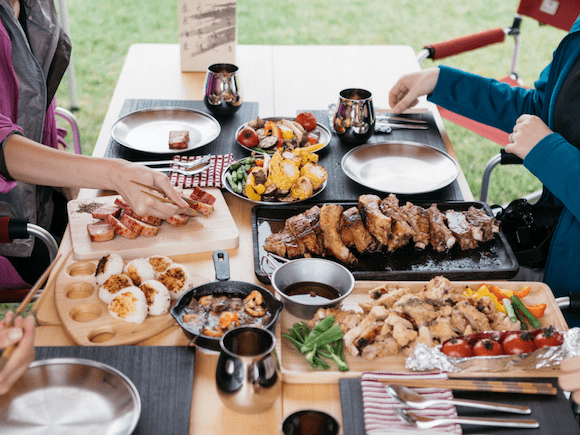Lately there’s been a strong revival of traditional Japanese arts and crafts. NIIGATA in 10 is a new project offering a novel form of promoting the prefecture’s long history of fine craftsmanship, by allowing visitors to see and use the products in context. One of their recent events, NIIGATA in 10 Vol. 2 was held in Tokyo, featuring a number of their promoted products. If you couldn’t make it, here’s a quick summary on what Weekender got up to when we recently went camping in Niigata to try out one of the project’s interesting experiences ourselves…
While some may believe you don’t know what you’ve got until it’s gone, Niigata Prefecture knows how great its locally made products are, and wants to share this with the world. They believe in the concept of “you don’t know how good something is until you’ve tried it out.” For this purpose, NIIGATA in 10 was created. It introduces Niigata-made products in a natural setting for people to try them out and experience their benefits for themselves. The project consists of 10 themes: working, collecting, crafting, cooking, cutting, tasting, playing, wearing, designing, and healing. Each of these themes is designed to represent a different aspect of our daily lives and fulfills that purpose.
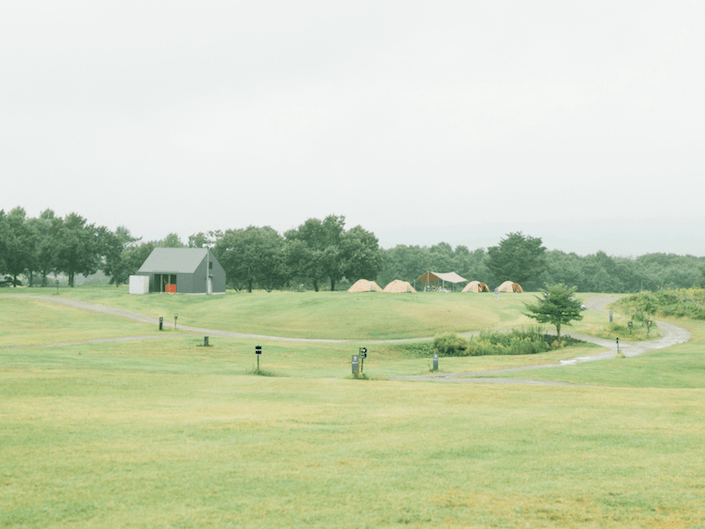 Camp in Niigata
Camp in Niigata
To help showcase the prefecture’s pride and joy, NIIGATA in 10 hosts a number of events to familiarize people with Niigata-made items, and one of these was Camp in Niigata. Here, bloggers and social media influencers tried out some of Niigata Prefecture’s products in a natural setting while camping in the heart of the prefecture itself. Surrounded by luscious green hills and pretty much nothing else, we got our first chance to try out a tenugui-inspired all-purpose cloth after working up a sweat putting up our tents.
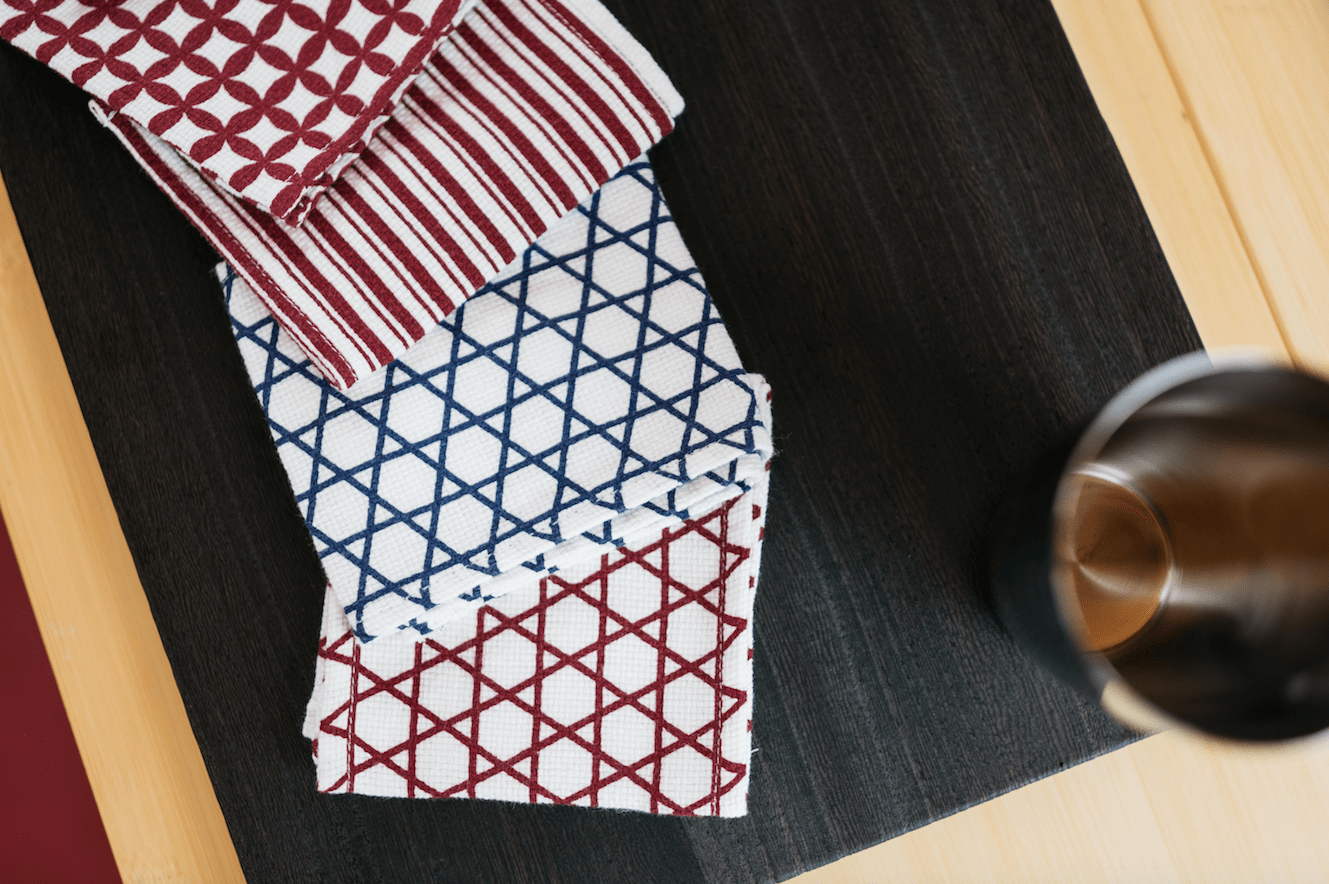
Tenugui-inspired all-purpose cloth
Day 1: Cooking and Eating with Niigata-made Products
Without much time to admire the lush hills and forests around us, we started cooking lunch, using locally made knives and paulownia-wood cutting boards to slice chicken, cut pork ribs, and chop vegetables with ease. Since we were camping, it was only fitting that we had a great big barbeque. We picked up marinated meat slab after meat slab with some narrow-tipped tongs that stood up without support when placed down on the table. While it may seem like a minor detail, not having to worry about the tip of your tongs getting covered in muck while rushing about cooking was a surprisingly welcome treat. Lunch was a feast of grilled vegetables, chicken marinated in yogurt and miso mixture, lightly toasted rice balls, and Spanish Gambas al Ajillo appetizer with mouth-watering shrimp.
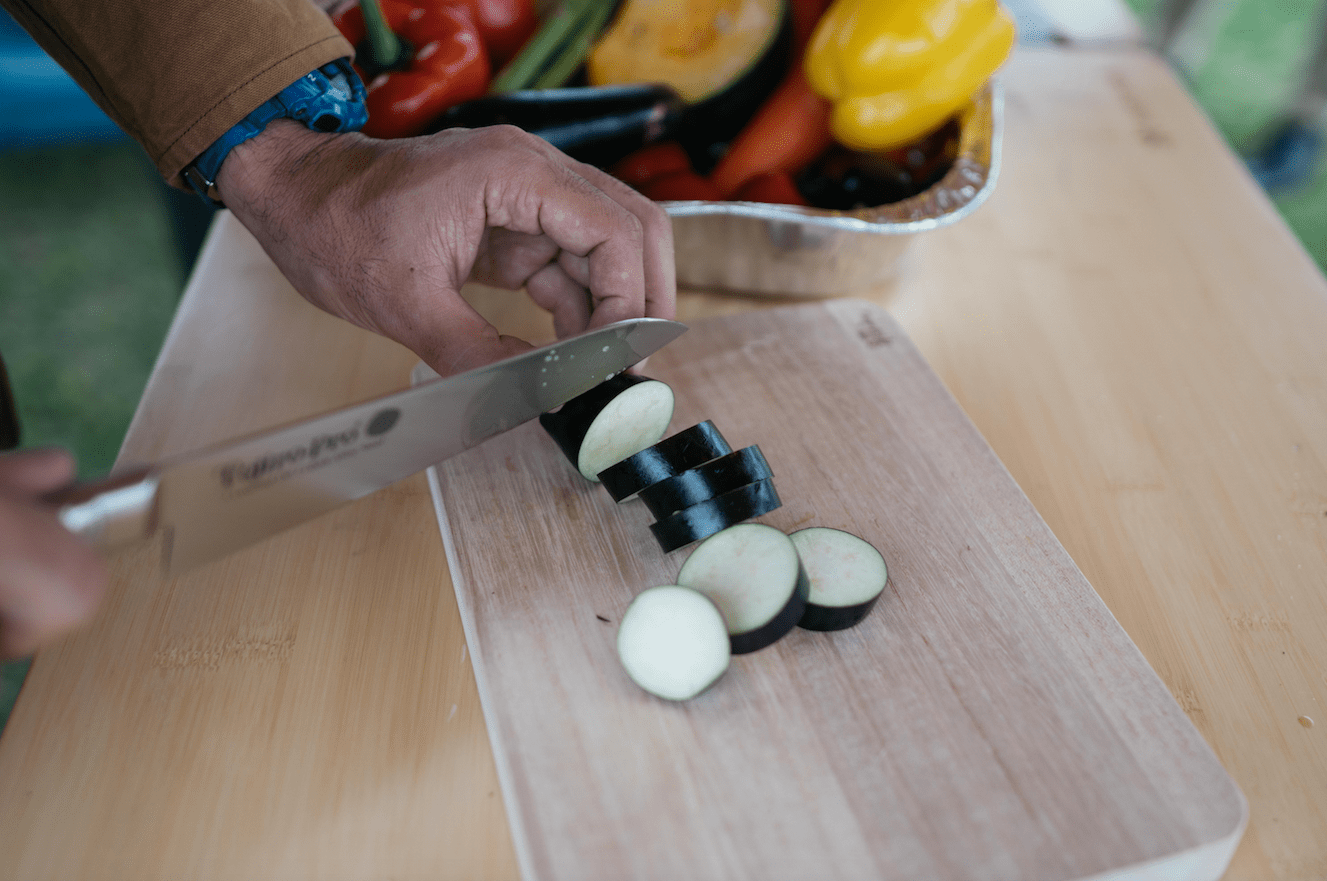
Using Niigata-made knives and a paulownia-wood cutting board
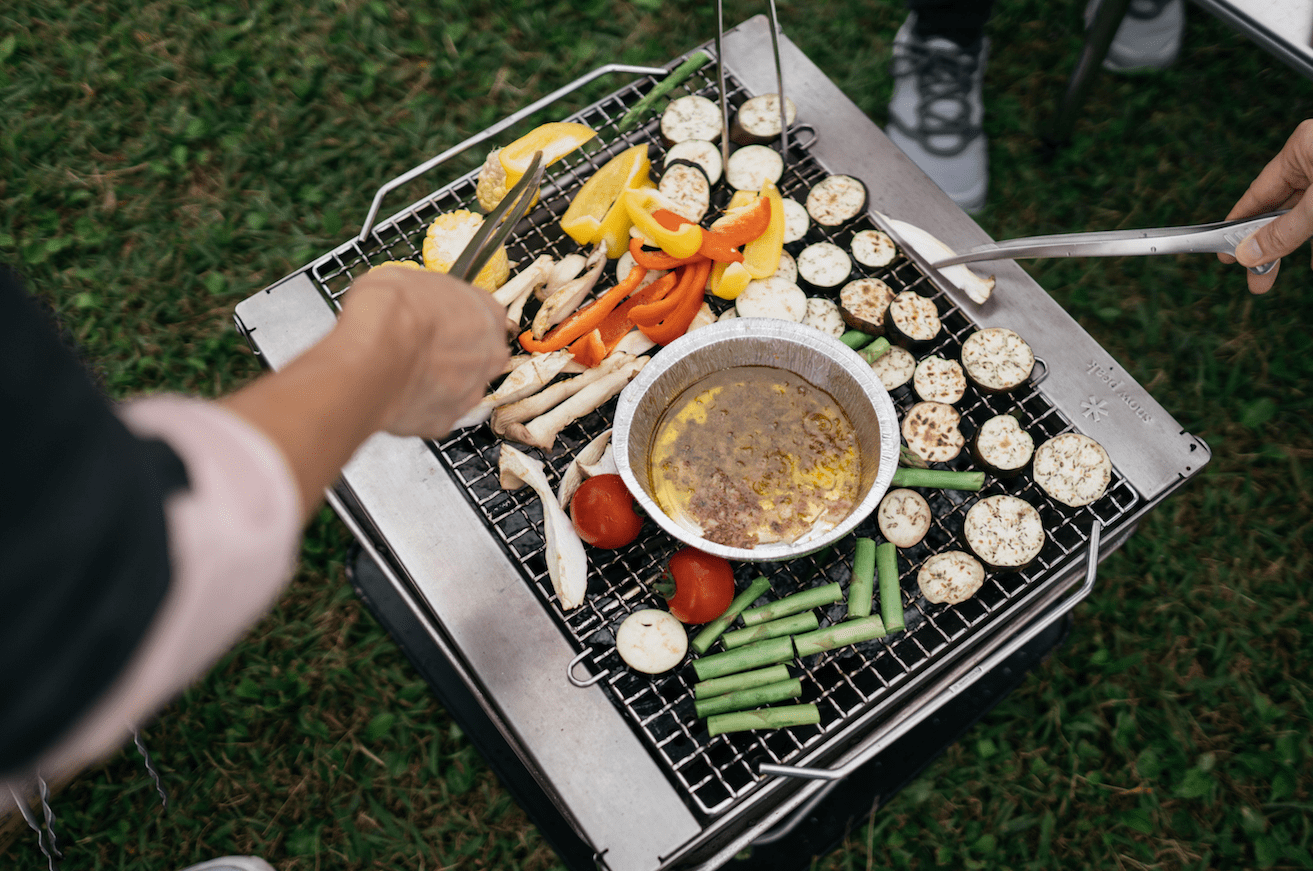
Barbecuing our lunch feast using narrow-tipped tongs
By the time we had finished our meal, we already had to start preparing dinner. Camping in autumn meant we were short on daylight hours, so to make the most of the light we had, we started cooking early. Dinner would be a creamy Thai chicken curry, with rice cooked in a glistening copper pot on a gas stove. Though we worried about cooking the rice this way – normally it takes a fair amount of time and skill with temperature control – the rice was perfectly cooked within 20 minutes. Thanks to the high conductivity of the copper, the rice cooked both quickly and evenly, and faster than it would have using a normal rice cooker. With the curry, we had a feast of grilled pepper steaks, Japanese scallops with basil butter, and steamed edamame pepperoncino.
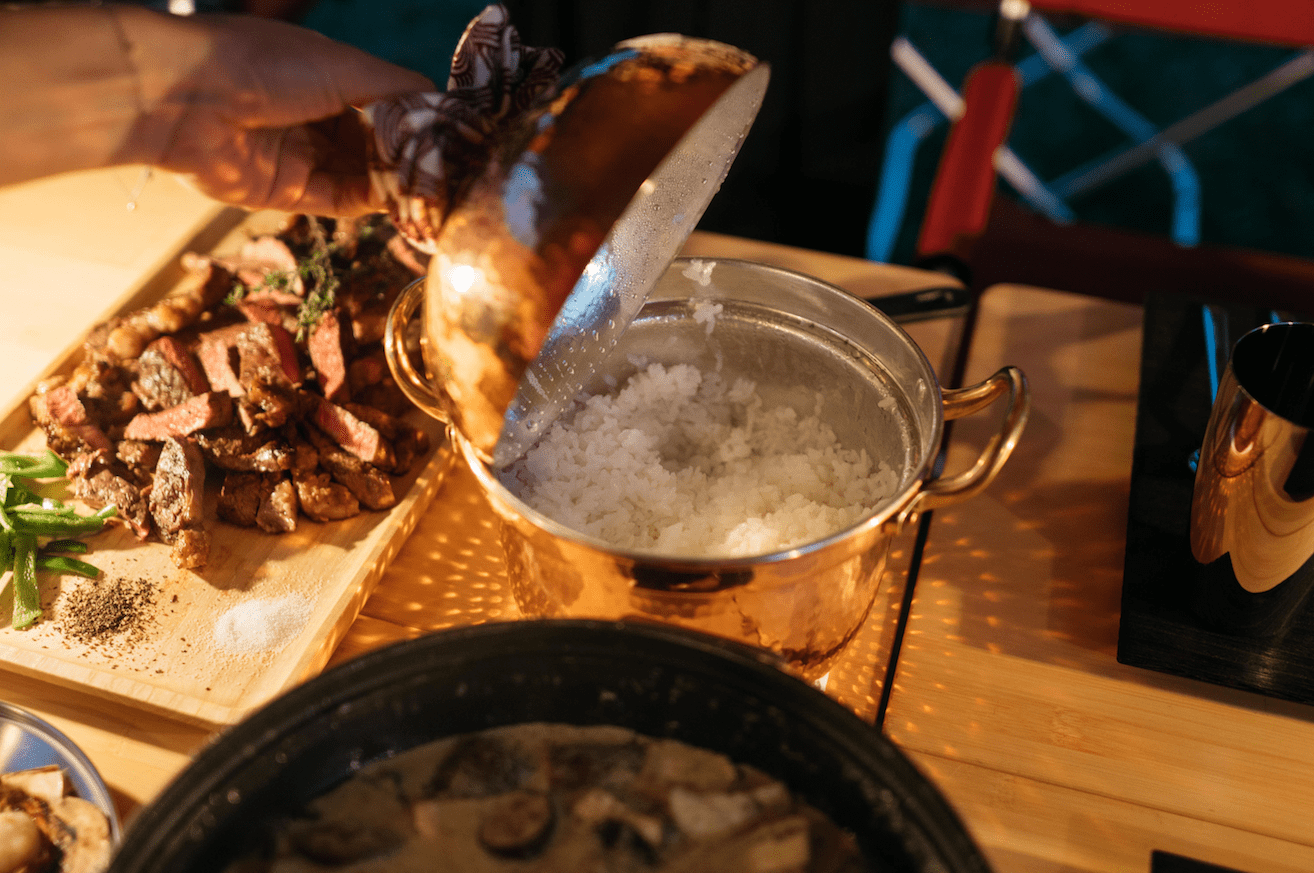
Our rice was prepared in a glistening copper pot
Finally, it was time to savor one of Niigata’s most famous local specialties: sake. Common sense tells us that sake made by competing breweries will taste different, but that night we learned that the same sake served in cups of varying materials could change the taste of the product remarkably. A sake cup made with aluminum made our sake taste sweet and strong, while another, slightly larger cup, made of kawara (the same material as roof
tiles) made it seem smooth and mellow.
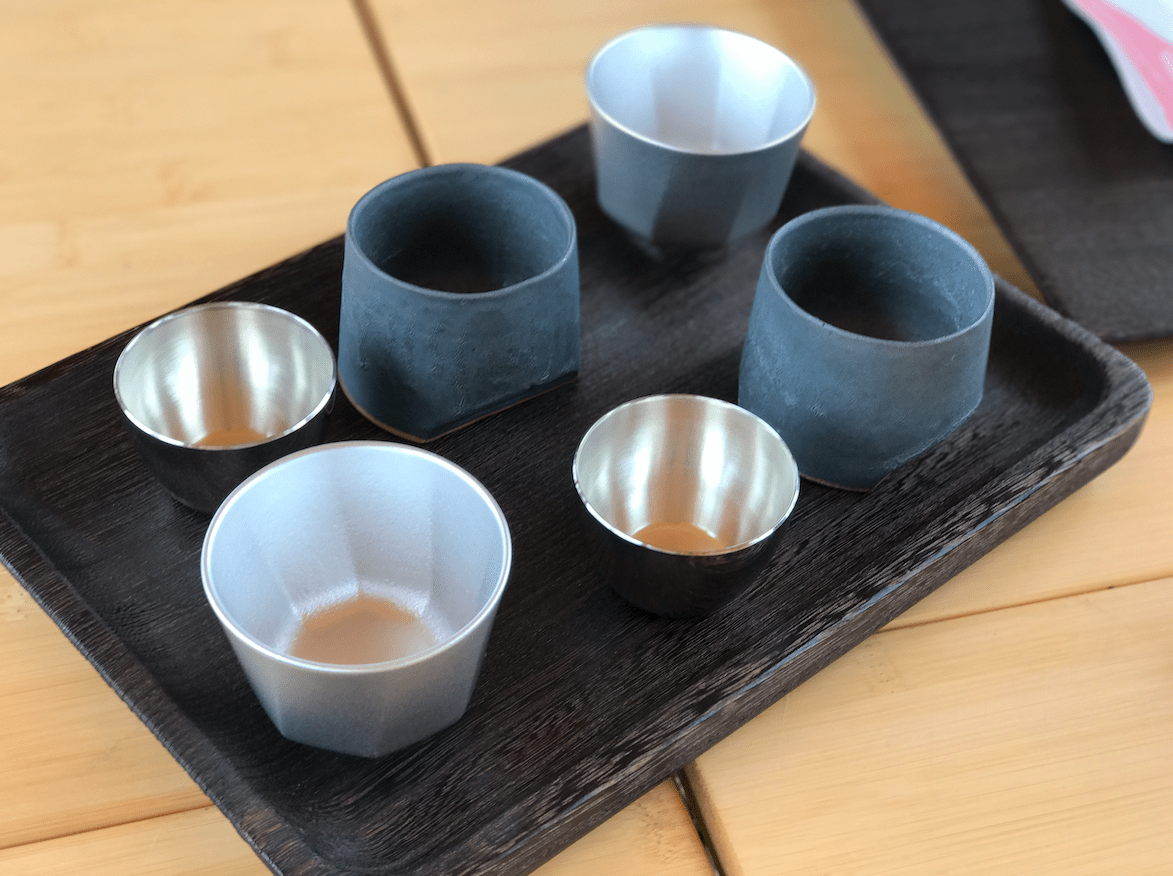
Niigata-made sake cups
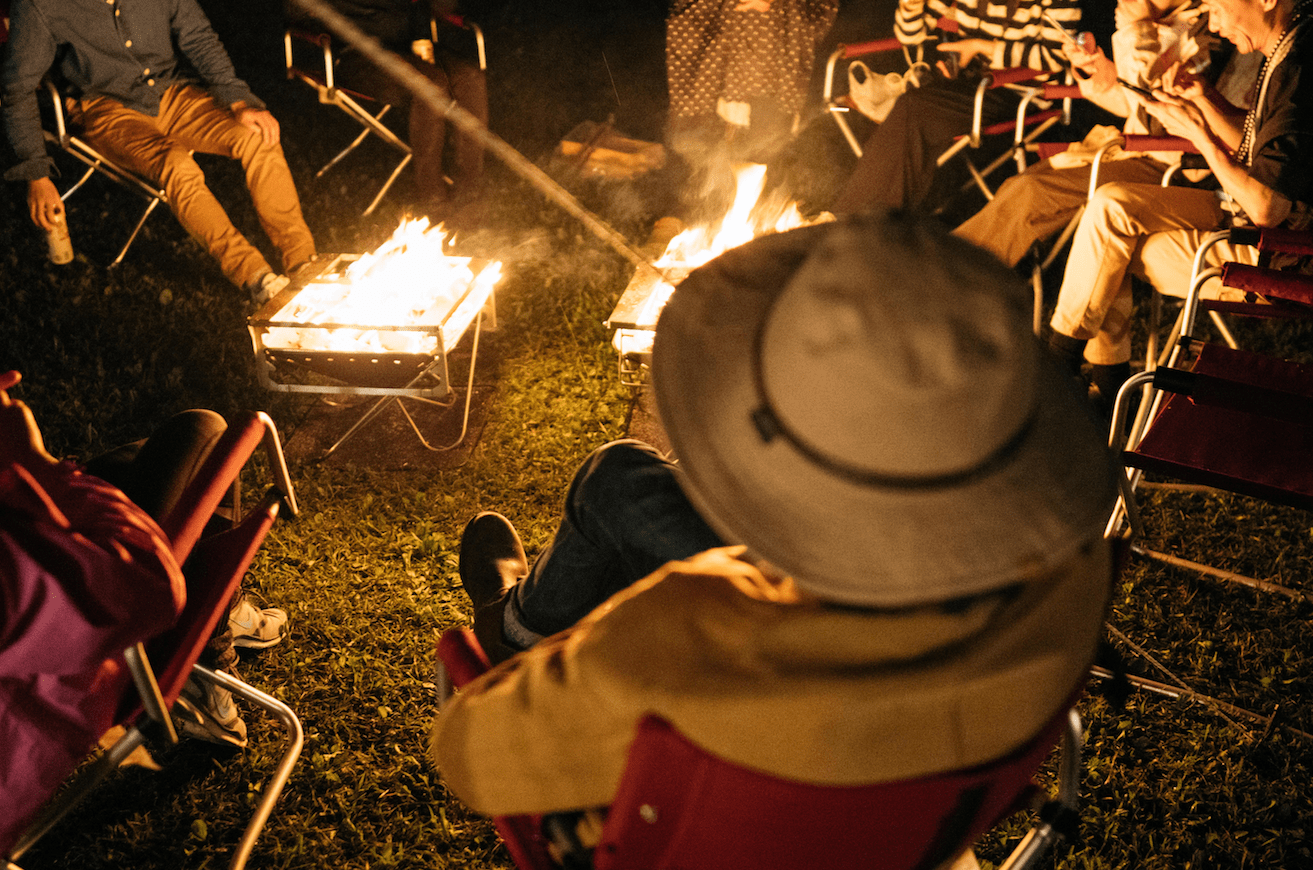
Campfire chats
Well-fed and well-boozed, we moved over to the newly started campfire to enjoy a chat as the sky turned black around us. It was only the call of a long hot soak in a nearby super sento a short drive away that would rouse us from our seats. The sento had several baths and saunas inside, and another three or four outside. The contrast of the crisp autumn evening air and the hot bath was refreshing as we soothed our aches and pains away. By the time we got back, most of us were ready for bed, and we fell into a deep slumber until the next morning.
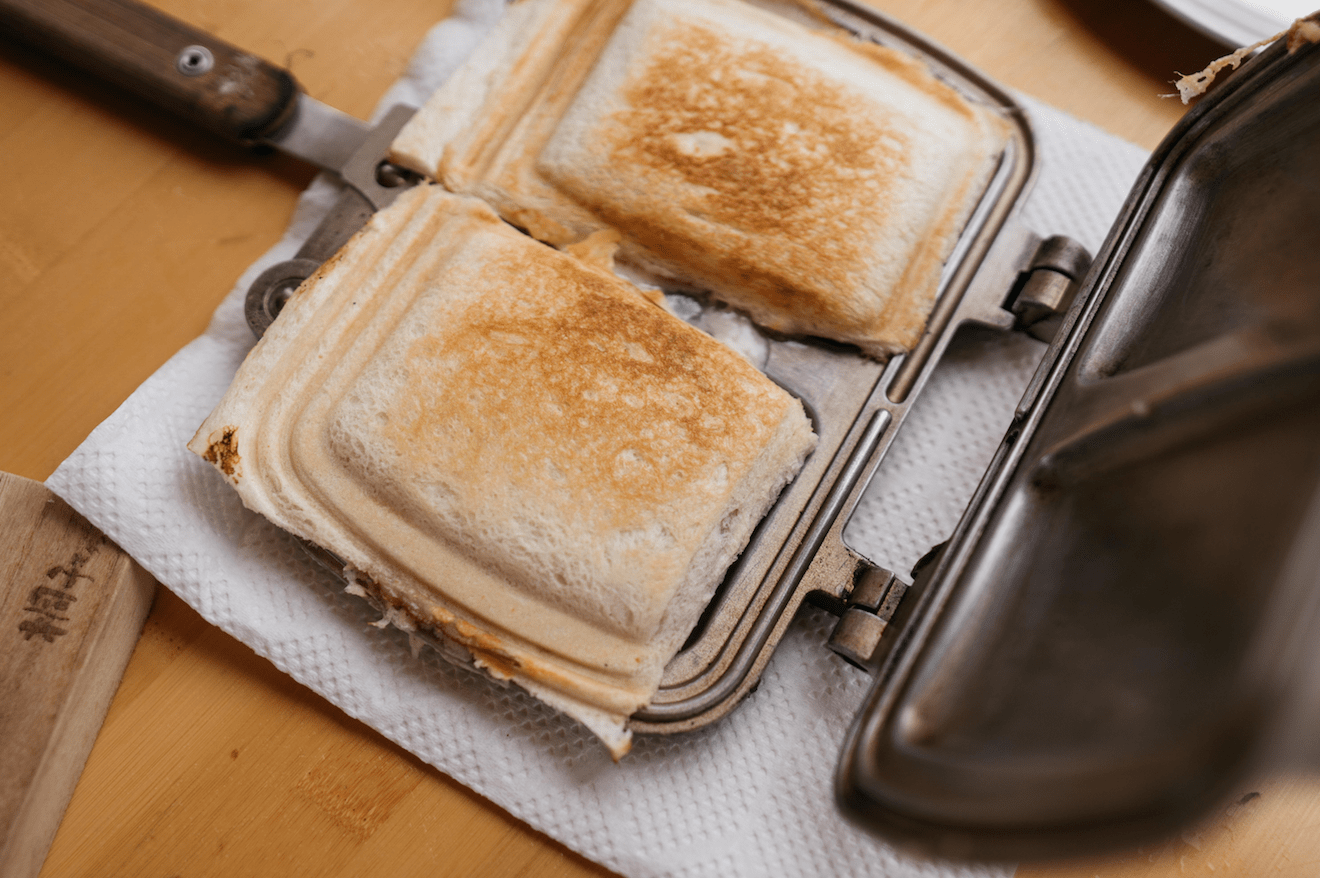
Toasted sandwiches for breakfast!
Day 2: Noon Nibbles and Cutting-Edge Knives
We woke to drizzling rain, but we didn’t let that dampen our spirits (only our clothes), because it was time to eat again: this time in the form of toasted sandwiches and fresh coffee. The tongs came in handy again here as we deftly moved our slices of bread from the hot sandwich makers to our plates. Stainless steel tumblers kept our tea ice cold and refreshingly delicious. Far from our trip being done, once we packed up our tents and things, we ate again – this time to try the local specialty, seabura ramen (pork back fat ramen). Say what you will about Niigata, but they do make sure you’re well fed.
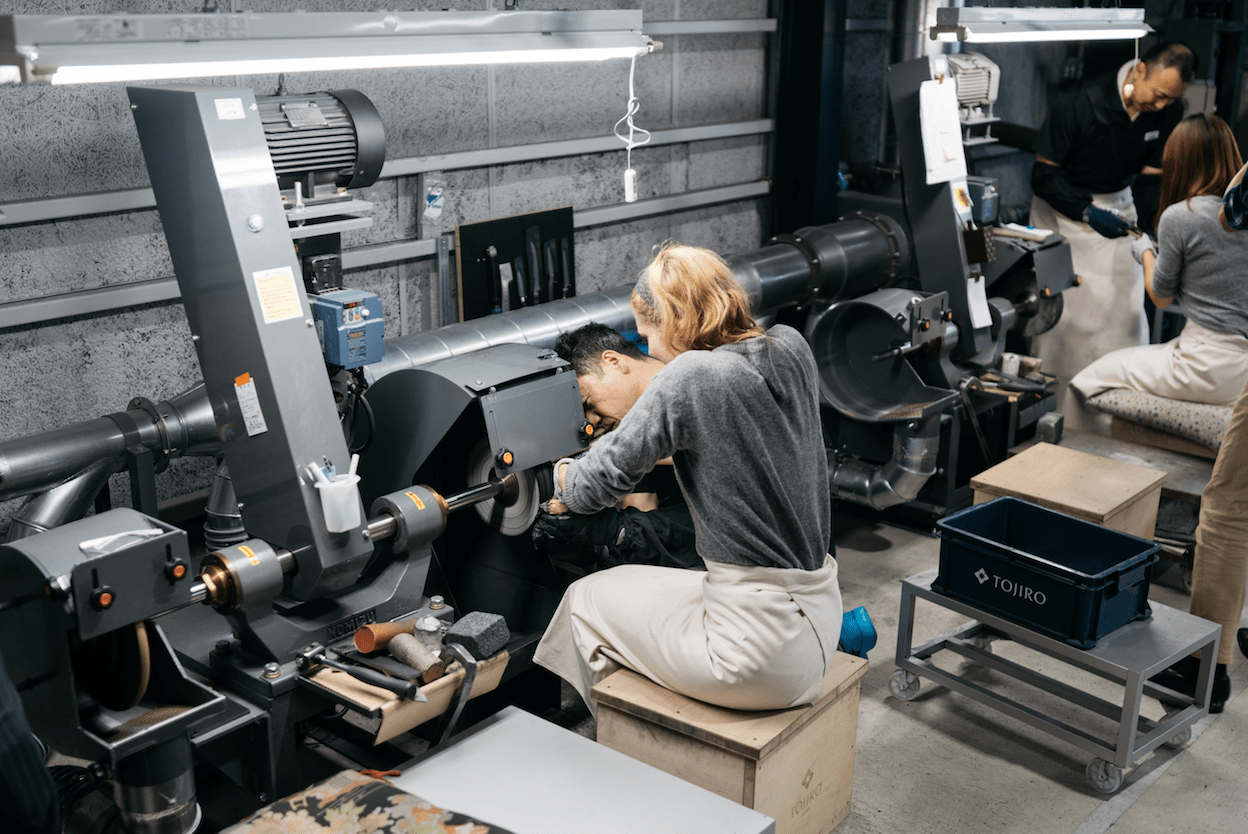
Trying our hand at making Niigata-quality knives
From there we headed to Tojiro Co Ltd, an internationally renowned knife producer – and purveyor of the knives we had tried the day before. Here we were rewarded with a special tour guiding us through how craftsmen make their knives – spending over two months from start to finish on one knife for special custom-made ones. While here, you can buy your very own Tojiro knife from the knife gallery. Here, our trip came to an end, leaving us with an understanding that Niigata-made items are not just beautifully designed, but also practical and easy to use.
The next NIIGATA in 10 event will be held in Tokyo from November 30 to December 3, 2017. For more information, visit our events calendar listing.
Photographs by Robert Kirsch
Sponsored Post

